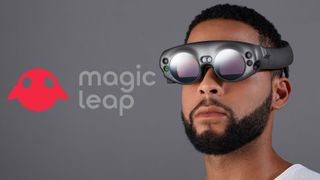Magic Leap Creator Edition Priced Like High-End Tablet, Smartphone

Magic Leap’s founder and CEO, Rony Abovitz, sat down for an on-camera interview at Recode’s Code Media Conference to discuss the company’s upcoming Magic Leap digital lightfield platform. Abovitz wouldn’t discuss the finer details about the Magic Leap Creator Edition, which is set to launch later this year. However, the executive revealed enough to set the expectation that Magic Leap headsets won’t be cheap devices.
Mass Market Pricing? Don't Hold Your Breath!
Abovitz didn’t reveal the specific price of the Magic Leap Creator Edition headset. However, when pressed, he conceded that it wouldn’t be a $200 mass-consumer device. Abovitz set the expectation that Magic Leap devices would be pricey, not only at launch but well into the future. “I think we’re pricing it—it’s a premium computer so that I would think of it that way,” Abovitz said. He added that the company isn’t pursuing a path to bring the price down dramatically. “I think the Magic Leap Creator Edition price point—we will have a product in that price point probably for the company’s history.”
Abovitz said the company is planning to introduce multiple tiers of Magic Leap devices that would cater to different customers. He said that the Creators Edition, which we’ll learn more about this spring, is a pro-sumer level product. Later, the company would release a higher-end device for the “hyper-pro” market, and another, more affordable headset for the wider consumer market.
Don’t expect that mass-market device to carry a budget price, though. Abovitz said that the “higher-end mobile phone to higher-end tablet zone would probably be [Magic Leap’s] floor,” which is to say, don’t expect to buy a Magic Leap HMD for less than $500 any time soon. We expect the Magic Leap Creators Edition to carry a price tag closer to $1,000.

Abovitz justified the high price of the Magic Leap hardware by comparing it to a myriad of devices it could eventually replace. His vision for the future includes a day when people will ditch their smartphones, their tablets, their computers, and their television sets in favor of a single Magic Leap device.
“The economy of what we’re building can replace –not on day one, but over gen-2, gen-3—a whole suite of electronics,” said Abovitz.
We’re probably many years away from Abovitz’s vision for the future, but early adopters will get a glimpse of it in the coming months. Abovitz said that Magic Leap would discuss the details of the hardware later this spring. He did, however, stress that the Magic Leap Creator Edition is not a developer kit, as we previously reported.
Stay on the Cutting Edge
Join the experts who read Tom's Hardware for the inside track on enthusiast PC tech news — and have for over 25 years. We'll send breaking news and in-depth reviews of CPUs, GPUs, AI, maker hardware and more straight to your inbox.
“It’s not a dev kit in a sense that we’re not blocking [anyone from buying one]—anyone can be a creator,” said Abovitz. “If you want to create, or you want to tinker, or you want to play with what’s coming, Magic Leap creator edition is for you.”
The first iteration of the device won’t be for everyone, but it will be a polished, consumer-ready product. Abovitz said the Magic Leap Creator Edition would be of interest to “enthusiasts, developers, creators, brands, artists, partners; people who want to get an early taste of what the future looks like.”
Kevin Carbotte is a contributing writer for Tom's Hardware who primarily covers VR and AR hardware. He has been writing for us for more than four years.
-
alextheblue "...people who want to get an early taste of what the future looks like."Reply
Riding on the coattails of existing hardware like HoloLens, of course. -
bit_user Reply
This is what hololens wants to be. At least the display technology, that is. Hololens has a fairly narrow range of distances it can support, since its image plane is at a fixed focal distance.20708625 said:"...people who want to get an early taste of what the future looks like."
Riding on the coattails of existing hardware like HoloLens, of course.
One reason Magic Leap got delayed for so long is that it needs a beefy GPU to do the lightfield rendering. MS couldn't have introduced hololens when it did (or else it'd have been even more expensive and used a saddlepack or VR backpack), if it used a lightfield display.
It will be interesting to see what GPU Magic Leap finally went with. I wonder if it could possibly be Nvidia's Xavier.
Most Popular



